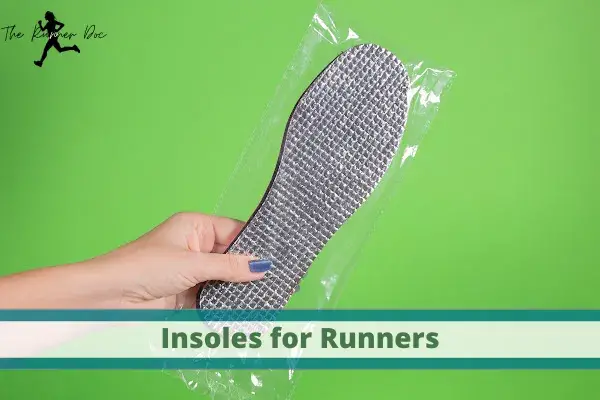In this article, we will explore the potential downsides of using insoles.
Sometimes hailed as a remedy for foot-related discomfort, insoles have gained popularity among individuals seeking relief for their tired soles.
However, alongside their numerous benefits, there are also potential negatives that we need to consider.
By understanding these potential drawbacks, you can decide whether insoles are the right solution.
So, let’s explore the other side of the coin and uncover the negative aspects of using insoles.
1. Potential Discomfort
1.1 Ill-fitting Insoles
One of the potential downsides of using insoles is the discomfort that can arise from ill-fitting inserts.
Insoles that do not fit properly can cause various issues, such as rubbing, chafing, and blisters. When the insoles do not align correctly with the contours of your feet, it can lead to discomfort and pain instead of providing the desired support and cushioning.
1.2 Uncomfortable Materials
Another factor that can contribute to discomfort is the choice of materials used in the insoles. Some insoles may be made of rough or rigid materials that can irritate your feet, leading to discomfort.
The lack of padding or inadequate shock absorption can also result in discomfort, especially during high-impact activities or prolonged periods of standing or walking.
1.3 Pressure Points
Insoles that do not distribute pressure evenly across your feet can create pressure points, which can be uncomfortable.
These pressure points can cause pain or soreness in specific areas of your feet, making it difficult to engage in daily activities comfortably. Finding insoles that promote proper weight distribution and reduce pressure points to minimize discomfort is essential.
2. Increased Foot Odor
2.1 Lack of Breathability
Insoles that lack breathability can contribute to an increase in foot odor. When your feet are enclosed in shoes with insoles that do not allow for proper airflow, it creates a damp and humid environment, which is ideal for bacterial growth.
This trapped moisture can lead to an unpleasant odor, making your feet uncomfortable and potentially embarrassing.
2.2 Bacterial Growth
The lack of breathability mentioned earlier can also result in increased bacterial growth.
Bacteria thrive in warm and moist environments, and the combination of sweat, inadequate ventilation, and insoles that do not promote airflow can create the perfect breeding ground for bacteria.
This can lead to foot infections, athlete’s foot, and other conditions that can cause discomfort and require additional treatment.
3. Dependency and Weakness
3.1 Muscle Atrophy
Over-reliance on insoles for support can result in muscle atrophy, as the muscles in your feet are not sufficiently engaged.
When your feet become dependent on external support provided by insoles, the muscles can weaken over time, decreasing overall foot strength and stability. This can make your feet more susceptible to injuries and increase the likelihood of discomfort in the long run.
3.2 Reduced Arch Support
While insoles can temporarily relieve individuals with low or collapsed arches, relying too heavily on them can weaken your feet’ natural arch support system.
The constant support provided by the insoles can result in the weakening of the muscles and ligaments responsible for maintaining proper arch support. This can lead to further discomfort and instability in the long term.
3.3 Loss of Natural Foot Function
When you consistently use insoles, it can contribute to the loss of your foot’s natural function. Insoles alter how your feet interact with the ground, potentially causing changes in your gait and overall foot mechanics.
This alteration of natural foot function can lead to long-term imbalances and discomfort, as your feet no longer function optimally.
4. Financial Costs
4.1 Frequent Replacement
Insoles typically have a limited lifespan, mainly if they are used regularly. Depending on the insoles’ quality and usage level, you may need to replace them every few months or more frequently.
This can add to significant financial costs, especially requiring specialized or customized insoles.
4.2 Customized Insoles
Customized insoles may be necessary for individuals with specific foot conditions or structural abnormalities. These insoles are often more expensive than generic ones and may require visits to healthcare professionals for proper fitting and adjustments.
The cost of these customized insoles and any additional consultations or assessments can be a significant financial burden for individuals.
5. Limited Shoe Options
5.1 Incompatibility with Certain Types of Footwear
Not all types of footwear are compatible with insoles. Some styles, such as sandals or open-toe shoes, do not offer the necessary space or structure for accommodating insoles.
This limits your shoe options and may force you to choose footwear that may not be your preferred style or suitable for specific occasions. This can be frustrating and inconvenient for individuals who value fashion or have specific occupational footwear requirements.
5.2 Restrictions on Style Choices
Even when insoles can be inserted into certain types of shoes, they may still alter the fit and feel of the footwear. This can restrict your style choices, as insoles affect shoes’ overall fit and comfort.
Additionally, the extra bulk of insoles may cause the shoe to feel tighter, limiting your ability to wear certain styles that may require a more sleek or snug fit. This can be unpleasant and limits your ability to express your style through footwear choices.
6. Potential Health Risks
6.1 Allergic Reactions
Individuals may sometimes experience allergic reactions to the materials used in specific insoles.
Allergic reactions can manifest as skin rashes, itching, or even more severe symptoms. If you have known allergies or sensitivities, it is essential to carefully consider the materials used in the insoles to avoid potential health risks.
6.2 Skin Irritation
Some people may experience skin irritation from certain insole materials even without allergies.
This can include redness, soreness, or blisters on the feet. Prolonged exposure to materials irritating the skin can be uncomfortable and require additional products to alleviate the irritation.
6.3 Neglected Underlying Conditions
Insoles to manage discomfort or foot pain may mask underlying conditions or injuries. Insoles can provide temporary relief, but they do not address the root cause of the problem.
By relying solely on insoles, you may delay seeking proper medical attention, potentially worsening the underlying condition and leading to long-term complications and discomfort.
7. Incorrectly Addressing Underlying Issues
7.1 Masking Pain Symptoms
Like the abovementioned point, insoles can mask the pain symptoms associated with certain foot conditions or injuries.
While this may provide temporary relief, it can lead to a false sense of security, as the underlying issue is not adequately addressed. By solely relying on insoles to alleviate discomfort, you may overlook the need for proper diagnosis and treatment, potentially exacerbating the problem in the long run.
7.2 Delaying Proper Treatment
By using insoles to manage discomfort, you may inadvertently delay seeking proper treatment for your foot condition or injury.
Insoles are not a substitute for professional medical advice, and the longer you postpone seeking appropriate treatment, the greater the likelihood of further discomfort or complications down the line. Consulting a healthcare professional to receive an accurate diagnosis and develop a comprehensive treatment plan is essential.
7.3 Ignoring Structural Problems
Insoles may provide temporary relief for foot discomfort, but they do not address structural problems that may be present.
For individuals with structural abnormalities such as flat feet or high arches, insoles alone may not correct the underlying issues. Ignoring these structural problems can lead to long-term discomfort and potentially increase the risk of foot-related injuries.
8. Inadequate Support or Correction
8.1 Ineffective Alignment
While insoles can offer some support, they may not provide the precise alignment your feet need. Individual foot mechanics and alignment can vary, and generic insoles may not cater to each person’s unique needs. Insoles that do not align properly with your feet can potentially worsen foot discomfort and fail to provide the necessary support and correction.
8.2 Insufficient Cushioning
Insoles that lack sufficient cushioning or shock absorption can result in inadequate support, especially during high-impact activities or prolonged periods of standing or walking.
Inadequate cushioning can increase pressure on specific areas of your feet, exacerbating discomfort and potentially causing injuries such as stress fractures or plantar fasciitis. Choosing insoles that offer adequate cushioning and shock absorption is crucial to minimize the risk of discomfort and injuries.
9. Inconvenience and Lifestyle Adjustments
9.1 Required Maintenance
Insoles may require regular maintenance to ensure their effectiveness and longevity. This can include cleaning, airing out, and potentially replacing the insoles as needed. The additional effort and time required for maintenance can be inconvenient, especially for individuals with busy schedules or those who prefer low-maintenance solutions.
9.2 Limited Barefoot Activities
Using insoles often means you cannot fully enjoy activities requiring a barefoot or minimal footwear approach. Insoles are designed to be used with shoes, and while some may be slim enough to allow for certain activities, the added support and bulk may interfere with the natural foot and ground interaction. This limitation can impact your ability to participate in activities such as yoga, Pilates, or certain sports emphasizing barefoot movement.
10. Potential Misdiagnosis
10.1 Falsely Attributing Symptoms to Insoles
Sometimes, individuals mistakenly attribute their symptoms or discomfort to the insoles rather than considering other underlying causes.
While insoles can undoubtedly contribute to specific issues, it is essential to rule out other potential factors or conditions that may be causing the discomfort. Misdiagnosis can lead to an incorrect focus on insoles as the sole solution, potentially prolonging discomfort and delaying proper treatment.
10.2 Delayed Treatment of Underlying Condition
Similar to the above, if you mistakenly believe that insoles alone can resolve your foot discomfort, you may delay seeking treatment for an underlying condition.
Ignoring or underestimating the importance of proper medical evaluation and treatment may prolong your discomfort and worsen the condition. It is vital to seek professional advice to receive an accurate diagnosis and appropriate treatment as early as possible.
In conclusion, while insoles can offer temporary relief and support for certain foot conditions, they must be aware of their potential drawbacks.
From potential discomfort and foot odor to dependence, limited shoe options, and potential health risks, it is crucial to consider these factors before solely relying on insoles for your foot-related issues.
It is always best to consult a healthcare professional for a complete assessment and personalized recommendations to address underlying conditions effectively and promote long-term foot health and comfort.













































